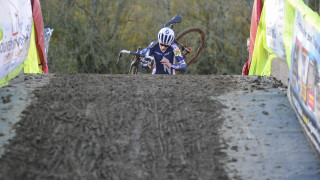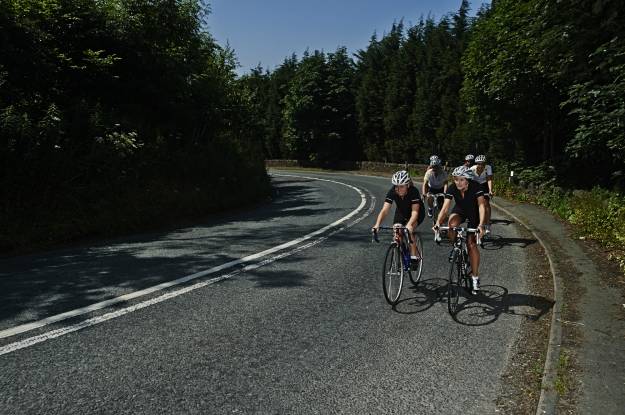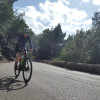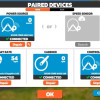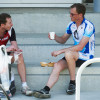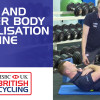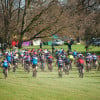Knowledge Level: Beginner
If you are thinking of trying cyclo-cross this winter, apart from the bike, what other bits of kit and clothing do you need? Fortunately, especially if you have already cycled through a winter or do some mountain biking, much of your existing kit and equipment will be ideal for cyclo-cross, so you shouldn’t have to spend a fortune. Here’s our list of cyclo-cross must haves.
Helmet
As with all forms of cycle sport in the UK, a helmet is compulsory for cyclo-cross and your regular road helmet is ideal. Despite the fact you’re racing through the coldest winter months, you will soon be overheating in a cross race so you’ll still be grateful of the cooling vents. Some racers will wear a cotton casquette under their helmet to wick sweat away and to provide some protection against the cold or, if it is really bitter, might also wear a headband to protect their ears.
Shoes
Unfortunately a combination of the mud and inevitable running sections make road shoes unsuitable for cyclo-cross. However, if you already mountain bike, the pedal and shoe combination you use for this is ideal for cyclo-cross. The multi-sided pedals allow easy clipping and unclipping and will self-clear of mud. Mountain biking shoes also have recessed cleats, aggressive tread and the option of fitting studs on the soles to allow easier running on rough and muddy terrain.
Warm-up clothing
Warm-up laps are an essential part of cyclo-cross racing. They allow you to prepare your body for the effort of the race, check out any technical or difficult sections of the course and ensure you’re running the correct tyre pressure for the conditions. As weather conditions are often bad though, you want to make sure you have extra clothing for warming up. A lightweight windproof gilet is extremely versatile but you might also want to consider taking a full waterproof. A windproof skull-cap will keep you head warm under your helmet and, although you might race in fingerless mitts or without gloves, full finger gloves are better for warming up. Arm and leg warmers are invaluable and can be kept on right until the gun.
Race clothing
Traditionally skin-suits are worn for cyclo-cross but regular bib-shorts and jersey will serve you just as well. One piece skin-suits are probably marginally warmer as they can’t ride up exposing your back and there are no pockets to catch handlebars or pedals in when carrying the bike. Not everyone feels comfortable wearing them though, there’s nowhere to put your car keys and last minute toilet stops can be tricky.
Adjust your base layer according to the conditions but be careful not to overdress as you will be working hard. You don’t need to wear as much as when riding on the road though as you won’t be generating the same chilling headwinds. A mesh style vest is often enough or, if it’s very cold, a lightweight merino t-shirt. You should aim to start feeling slightly cold. If you find you need long sleeves, keep your arm warmers on from the warm-up. Similarly, if you think you need to cover your legs, keep your legs warmers on but be careful of wearing too much. Some warming/protective embrocation on your knees is the traditional and surprisingly effective way to take the edge of any chill without risking overheating.
Most racers will ride in fingerless track mitts or barehanded for a better and more sensitive grip on the bars. Without the chilling headwind or long descents your hands won’t get as cold as they do on the road and the constant braking, shifting and changing hand positions will also keep them warm.
Food and Drink
If you’ve eaten and hydrated well in the hours leading up to the event, as the races are only 45-60 minutes in duration, you shouldn’t need to carry or consume any food or fluids during it. Cyclo-cross races normally start mid-morning so breakfast will be your pre-race meal. Try to ensure you have breakfast at least 3 hours before the start of your race and then keep your energy and hydration levels topped up by sipping an energy drink.
Spares
The laps on cyclo-cross courses are short (typically 1-1.5km) so, there’s no need to carry spares or tools. If you’re unfortunate enough to get a puncture or have a mechanical problem, just run your bike around the rest of the lap to the start/finish or pits and sort it there with kit you have left for this purpose.
This could just be the pump, inner tube, tyre levers and multi-tool combination you’d carry on the road, spare wheels if you have them or, in the case of top racers, a whole replacement bike that will have been lovingly cleaned by their pit crew.
Post-race clothing
Once the post-race adrenaline has worn off, you’re going to chill rapidly so quickly put on some of the layers you used for warming up. Don’t hang around in your muddy wet kit, go straight to your car, strip down, towel off and get some warm clothes on. Fleecy hoodie tops, tracksuit bottoms and a beanie hat are ideal for getting warm quickly. Lay them out in an easy to grab order before the race as you are likely to be feeling very tired afterwards.
Post-race snacks
If you will be finishing your race near lunchtime, have a sandwich or similar packed that you can eat quickly and easily. A hot thermos of tea, coffee or soup can be an absolute lifesaver and clutching the cup is brilliant for thawing out frozen fingers. If it will be more than an hour before your lunch, have a protein shake to kick start your recovery and tide you over.
Bike clean
If you are putting your bike in your car, a portable jet-washer that you plug into the cigarette lighter is an excellent upholstery saving investment. A cheaper alternative is a hand pressurised sprayer from a garden centre. Get the worst of the dirt off, run the chain through a rag with some water dispersant spray and give the frame a wipe down. You can do a proper clean once you’re home, fed, warm and showered.


